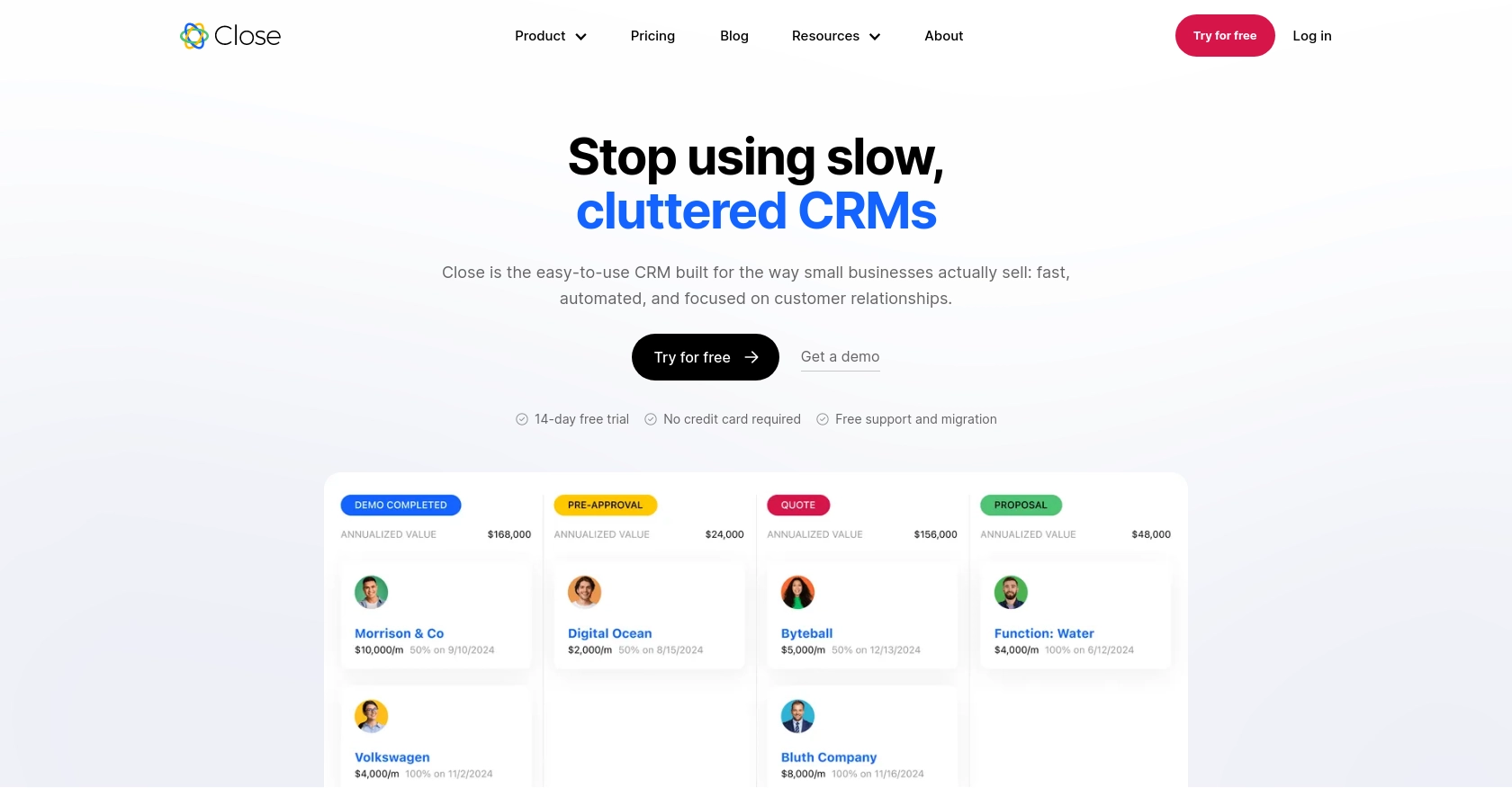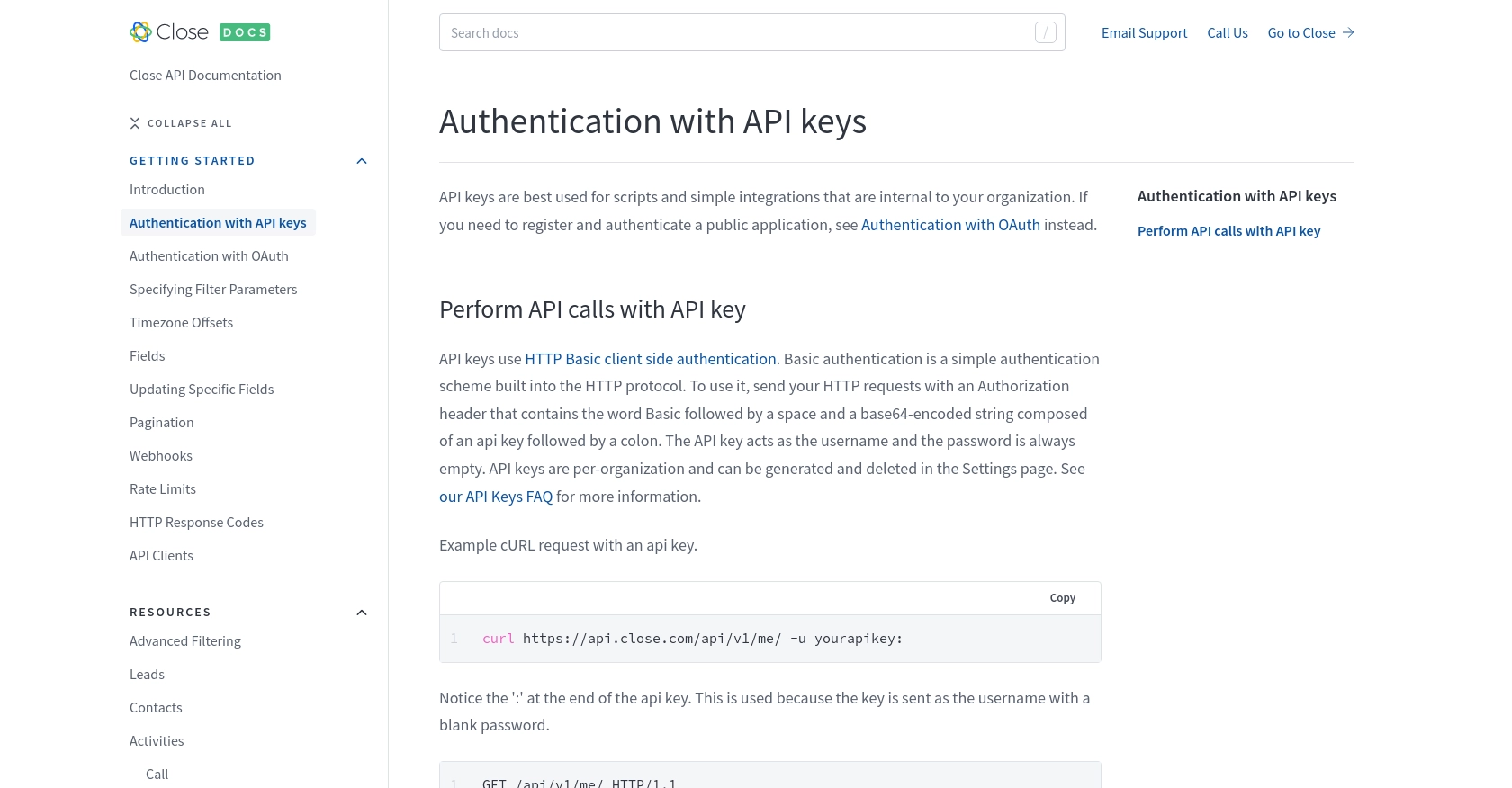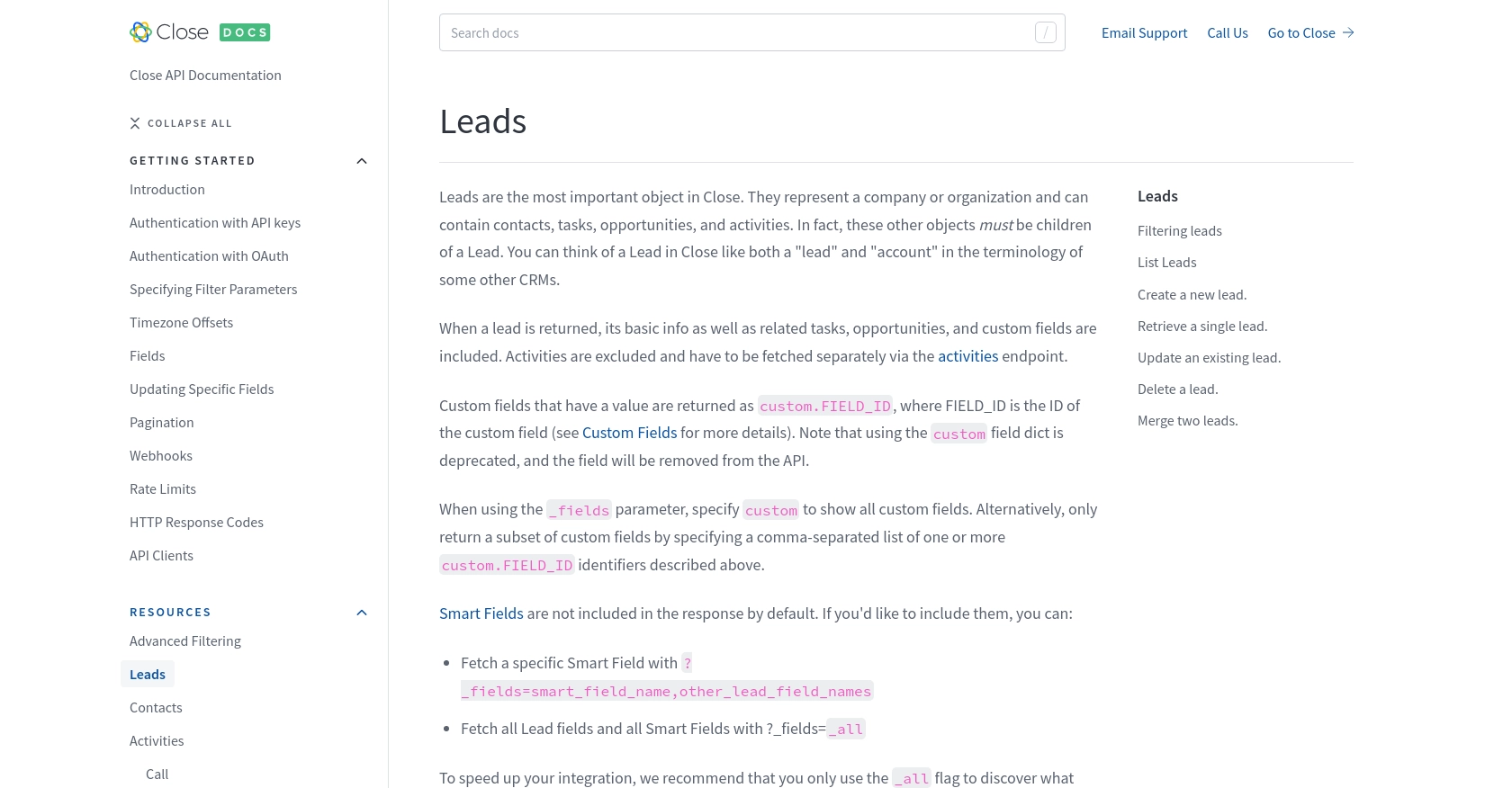How to Get Leads with the Close API in PHP

Introduction to Close CRM API
Close is a powerful CRM platform designed to help businesses streamline their sales processes. It offers a comprehensive suite of tools for managing leads, contacts, and sales activities, making it an ideal choice for sales teams looking to enhance their productivity and efficiency.
Integrating with the Close API allows developers to automate and optimize sales workflows. For example, you can use the Close API to retrieve leads and integrate them into your custom sales dashboard, enabling your team to focus on high-priority prospects and close deals faster.
Setting Up Your Close CRM Test Account
Before you begin integrating with the Close API, you'll need to set up a test account. This will allow you to safely experiment with API calls without affecting live data. Close offers a straightforward process for creating a test account, which is essential for developers looking to build and test integrations efficiently.
Create a Close CRM Account
If you don't already have a Close account, you can sign up for a free trial on the Close website. This trial will provide you with access to all the features you need to test the API integration.
- Visit the Close website and click on the "Try for Free" button.
- Fill out the registration form with your details and submit it to create your account.
- Once your account is created, log in to access the Close dashboard.
Generate an API Key for Close CRM
Close uses API keys for authentication, which are ideal for internal scripts and integrations. Follow these steps to generate your API key:
- Log in to your Close account and navigate to the "Settings" page.
- Under the "API Keys" section, click on "Generate API Key."
- Provide a name for your API key to help you identify it later.
- Click "Create" to generate the key. Make sure to copy and store the API key securely, as you'll need it for authentication in your API requests.
For more details on API key authentication, refer to the Close API documentation.

sbb-itb-96038d7
How to Make API Calls to Retrieve Leads Using Close API in PHP
To effectively interact with the Close API and retrieve leads, you'll need to set up your PHP environment and make authenticated requests. This section will guide you through the necessary steps, including setting up PHP, installing dependencies, and executing API calls to fetch leads from Close CRM.
Setting Up Your PHP Environment for Close API Integration
Before making API calls, ensure you have the following prerequisites installed on your system:
- PHP 7.4 or higher
- Composer, the PHP package manager
Once you have these installed, use Composer to install the Guzzle HTTP client, which will help you make HTTP requests:
composer require guzzlehttp/guzzleExecuting API Calls to Fetch Leads from Close CRM
With your environment set up, you can now create a PHP script to interact with the Close API. Follow these steps to retrieve leads:
<?php
require 'vendor/autoload.php';
use GuzzleHttp\Client;
// Initialize the Guzzle HTTP client
$client = new Client();
// Set the API endpoint and your API key
$apiEndpoint = 'https://api.close.com/api/v1/lead/';
$apiKey = 'your_api_key_here';
// Make a GET request to the Close API
$response = $client->request('GET', $apiEndpoint, [
'headers' => [
'Authorization' => 'Basic ' . base64_encode($apiKey . ':')
]
]);
// Parse the JSON response
$data = json_decode($response->getBody(), true);
// Display the leads
foreach ($data['data'] as $lead) {
echo 'Lead Name: ' . $lead['name'] . "\n";
echo 'Lead Status: ' . $lead['status_label'] . "\n\n";
}
?>
Replace your_api_key_here with the API key you generated earlier. This script initializes a Guzzle client, sets the API endpoint, and makes a GET request to retrieve leads. The response is then parsed and displayed.
Verifying Successful API Requests and Handling Errors
To ensure your API call was successful, check the HTTP response code. A status code of 200 indicates success. If you encounter errors, refer to the following HTTP response codes:
- 400: Bad request, check your request parameters.
- 401: Unauthorized, verify your API key.
- 429: Too many requests, implement rate limiting as described in the Close API documentation.
For more details on handling errors, refer to the Close API HTTP response codes documentation.

Conclusion and Best Practices for Integrating Close API in PHP
Integrating with the Close API using PHP can significantly enhance your sales processes by automating lead management and optimizing workflows. By following the steps outlined in this guide, you can efficiently retrieve and manage leads, allowing your sales team to focus on closing deals and improving productivity.
Best Practices for Secure and Efficient Close API Integration
- Secure Storage of API Keys: Always store your API keys securely. Avoid hardcoding them in your scripts and consider using environment variables or secure vaults.
- Implement Rate Limiting: To prevent hitting rate limits, implement logic to handle HTTP 429 responses by pausing requests as specified in the Close API rate limits documentation.
- Data Standardization: Ensure that data retrieved from the Close API is standardized and transformed as needed to fit your application’s requirements.
Streamlining Integrations with Endgrate
If managing multiple integrations becomes overwhelming, consider using Endgrate to simplify the process. Endgrate offers a unified API endpoint that connects to various platforms, including Close, allowing you to build once and deploy across multiple services. This approach saves time and resources, enabling you to focus on your core product and deliver a seamless integration experience for your users.
Visit Endgrate to learn more about how you can streamline your integration processes and enhance your product offerings.
Read More
- https://endgrate.com/provider/close
- https://developer.close.com/topics/authentication/
- https://developer.close.com/topics/authentication-oauth2/
- https://developer.close.com/topics/pagination/
- https://developer.close.com/topics/rate-limits/
- https://developer.close.com/topics/http-response-codes/
- https://developer.close.com/resources/leads/
Ready to get started?
